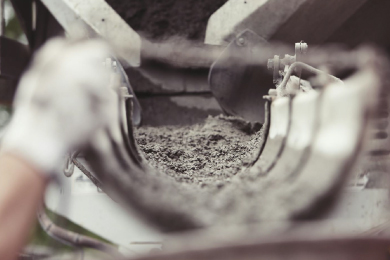Here at Green Building Design, we’ve been doing some future-gazing. What will 2024 bring for energy-efficient buildings and their owners and managers, and for the construction sector that builds, converts, and renovates them?
In brief, it’s a mixed bag. More supportive legislation appears to be on its way in some quarters, but consumption costs show no sign of abating.
Public and media understanding around the capabilities of energy-efficient and low-carbon heating is often poor, and the green heating sector is largely undertrained, underskilled, and underfunded.
And, as ever, whilst changing people’s, behaviours, and expectations around energy-efficiency is key, doing exactly the same whilst using less is rarely possible. Sometimes, habits simply have to change.
Here’s the view for 2024 from where we’re standing.
Electricity is “doing a petrol”
In 2024, we’ve probably seen the last of lowered price caps. The cap (for domestic electricity) went up by £94 on 1st January, squeezing household budgets further, and it seems likely that this will become the new norm.
In fact, we believe electricity is now “doing a petrol”.
Petrol prices have skyrocketed over many years in a way that simply doesn’t tally honestly with the reality of supply costs.
Likewise, electricity is actually now cheaper to generate than ever before, thanks to 60% - 70% of the supply coming from renewables during the summer months - yet the caps are rising, taking the price to the user with them.
And on business electricity, there’s no cap at all – so price rises are potentially unbridled.
In all cases, it’s profiteering by any other name.
Legislation changes: all a bit vague
On a more positive note, it’s good to see some changes to legislation to support the installation of energy-efficient technologies – but there’s a lack of clarity.
This concerns the several hundred thousand listed buildings in England, the owners of which will no longer have to apply for permission to install energy-efficient technology – including heat pumps and photovoltaic (PV) panels - under new Government proposals.
Sounds great – but what does “apply for permission” mean? Technically, all such installations require planning permission – but will listed buildings now be able to install whatever they like?
It seems highly unlikely, given the huge quantity of objections to PV panels and heat pumps we currently encounter from planning authorities in historic areas of the country, so more detail is needed.
High prices may kill energy-hungry habits
2024 is also likely, in our view, to be the year in which spiralling electricity and energy costs start to gradually put a painful kybosh on energy-hungry habits and behaviours, and force the industry to do things differently. (A silver lining if ever there was one!)
Simple changes in habits can go a long way. In an average detached house, for which we recently carried out some thermal modelling, we found that turning down the heating from 21° to 20° would save 21% on the yearly heating bill. Turning it down to 16° would reduce it by a whacking 78%!
And as energy prices bite, these burgeoning behaviour changes will ripple through to the construction industry itself. Many builders routinely ignore the “regs” that now mandate the installation of high-pressure, low-heat showers, for example – but as bills go up, customers will start to demand them.
And as it becomes clearer that the payback time on PV solar panels is now shorter than ever - and that combining PV and heat pumps makes it possible to both generate and use energy at the cheapest times of the day - traditional approaches to building and heating will start to look increasingly unattractive.
That said, much else has to change in the course of 2024 if we’re serious, as a nation, about maximising energy efficiency and minimising carbon emissions in our buildings.
What else has to change?
Better education around heat pumps, for example, is critical.
There’s much myth making around these devices: that they don’t heat effectively (they do, although you might need bigger radiators), that they won’t work in older buildings (they will), or that they won’t work in cold climates (they will – in chilly Norway, as of 2020, there were 60 heat pumps installed per 100 households.)
But at the same time, there needs to be greater expertise available to install and commission heat pumps, based on thorough modelling of the building’s thermal characteristics, and taking into account the effect of insulation, ventilation, and user behaviours. This expertise is sadly lacking amongst many installers at present.
And perhaps the way we live and work has to change, too. Take data centres , for example - some of the biggest consumers of electrical power on the planet (as explained in this previous post).
By helping data centres to sensibly reduce their backup power supply load (UPS), and to use more efficient cooling methods, we’ve helped them significantly reduce how much electricity they use (and pay for), and the burden they place on the environment.
But perhaps behaviour change is needed here, too. If we, as users, upload and store less data, we ultimately reduce the electricity the data centres use (time to do something about all those WhatsApp images!) and if the data centres purge data more effectively and more regularly, the same is true.
Get in touch to find out how we can help makeyour buildings more energy-efficient, and lower their carbon emissions, using technologies that will reduce costs and pay back quicker in 2024





.png)




